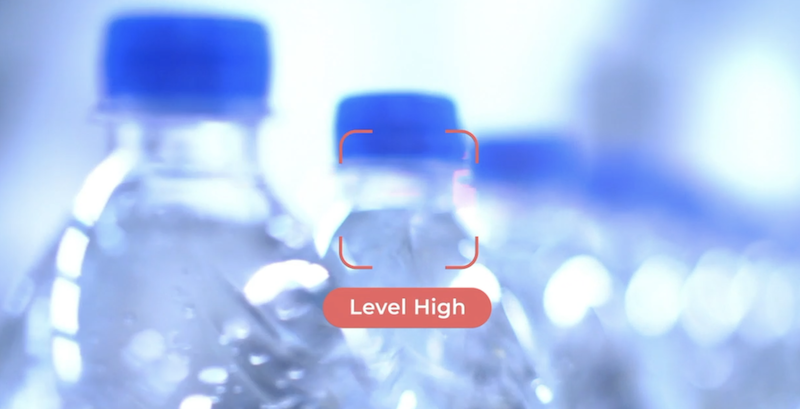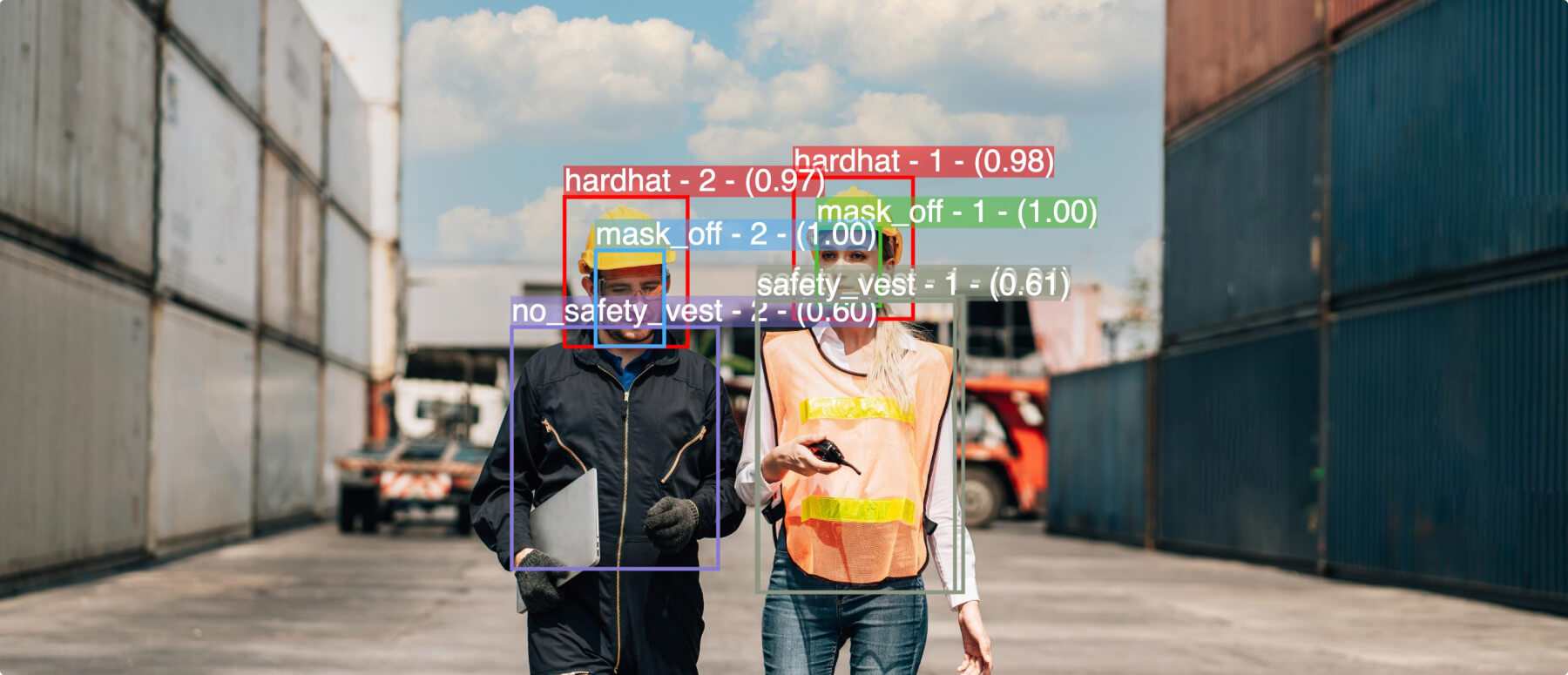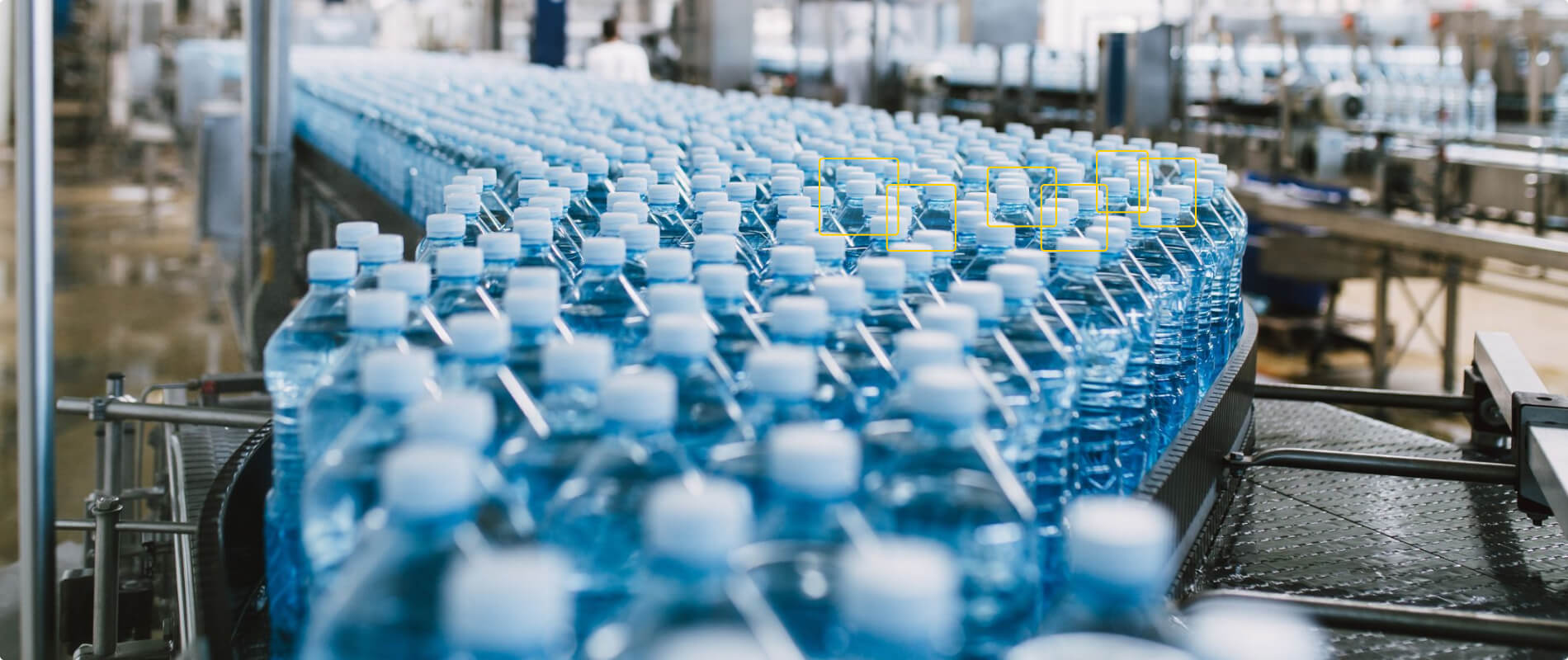Imagine a manufacturing facility with a team of quality control inspectors that never get tired, never get distracted, and always perform their jobs with laser-point accuracy. Even better, these defect detection inspectors provide their services for a fraction of the usual cost.
Until recently, this idea was nothing more than a pipedream. But today, global industrial manufacturers and consumer packaged goods (CPG) companies are deploying AI-based computer vision technologies to detect manufacturing defects. These AI systems are detecting flaws with levels of accuracy that far exceed the capacity of human inspectors – and they’re also a lot less expensive than human workers.
In this article, we’ll look at why computer vision defect detection systems are needed in manufacturing facilities and how visual AI defect detection works. We’ll also discover some exciting real-world use cases for this technology in manufacturing and CPG facilities.


The Need for Visual AI Defect Detection in Manufacturing
Manufacturing and CPG defects can be costly. According to Marsh.com, product defects can trigger enormous costs and expenditures related to:
- Notifying retailers and customers about defective products
- Identifying and tracking down defective products
- Transporting and repackaging defective products
- Destroying and disposing of defective products
- Replacing defective products with better-built items free of defects
- Adverse publicity that damages the manufacturer’s reputation
- Loss of revenue that results from adverse publicity
- The cost of marketing and public relations efforts to rehabilitate sales and rebuild customer trust
Of these expenditures, Allianz claims that “the biggest single cost of a product recall event is the loss of sales and business interruption, both from the recall itself and the reputational damage.” There is also the potential for legal costs related to defective product liability lawsuits. According to Allianz, “defective product incidents have caused insured losses in excess of $2 billion over the past five years, making them the largest generator of liability losses.”
Considering these costs, the ROI benefits of catching defects before they leave the manufacturing facility is obvious. However, human defect inspectors can only do so much to identify manufacturing errors at industrial factories and CPG facilities. While most manufacturing facilities have a longstanding history of relying on human defect inspectors, humans employed in visual inspection tasks are prone to getting tired, distracted, and making serious and costly errors.
This is where a visual AI quality control system can help. Visual AI systems for defect detection are not only more affordable than human defect detection staff, but they are also more accurate when it comes to finding and reporting defects.
How Visual AI Defect Detection Works
Modern Visual AI technologies rely on powerful cloud-based servers that allow them to rapidly ingest visual information for machine-learning training purposes. By training a computer vision system with hundreds of thousands or millions of images of specific types of product defects, these systems can learn to rapidly identify similar defects with a high degree of accuracy. Visual AI defect detection systems can identify flaws like bottles missing bottlecaps, cracks in pipelines, poorly painted surfaces, missing parts, broken items, misshaped items, cracked glass, cracked metal casings, and virtually any other type of errors that human visual inspectors identify.
After setting up a high-quality camera system along the assembly line of a manufacturing facility – and connecting the cameras to the visual AI system – facilities can detect, flag, remove, and replace defective products more efficiently and successfully, thereby circumventing the massive costs and workflow inefficiencies that these errors cause. Best of all, this is achieved vastly more affordably than relying on human laborers.
The most advanced visual AI inspection technologies – such as Chooch.com – can spawn lightweight “Edge AI” systems that run in the cloud. These systems can immediately integrate with an existing IoT infrastructure of cameras. They can also automatically deploy to the Edge through cloud-based dashboards and APIs. Finally, Edge AI technology makes the integration and replication of a trained visual AI defect detection system easier and more efficient across an entire enterprise.
Use Case Examples for Visual AI Defect Detection in Manufacturing
We have identified an endless range of visual AI defect detection use cases. These use cases apply to industrial manufacturing plants, CPG facilities, quality controls for infrastructure, airline industry safety, and more. Ultimately, whenever a manufacturing facility employs human laborers to visually inspect for defects, an AI-based computer vision system can likely perform the same task with greater efficiency and fewer errors.
Here are several use case examples for a visual AI defect detection system:
Industrial manufacturing plants: Industrial manufacturing facilities must meet specific levels of quality – not only because they must provide defect-free products to their customers, but also due to industry standards and government regulations. With a Chooch computer vision system, organizations can train a visual AI system to detect the most important defects that interfere with product quality at an industrial manufacturing plant. These could relate to cracks in casings, broken products, missing parts, unsightly scratches, dust on painted items, structural integrity problems, poorly painted items, and more.
CPG production facilities: Consumer packaged goods manufacturers must meet some of the highest safety and quality standards that exist. Visual inspectors need to identify discolored potato chips, unsightly or rotten food products, packaging defects, and other defects. An appropriately trained Chooch.AI system can identify these kinds of defects – including blackened potato chips, misshapen food products, uncapped soft drinks, leaking products, broken glass, and poorly packaged items.
Quality control for infrastructure: When it comes to the large machinery used in manufacturing – and essential infrastructure items required for mining, oil drilling, and other large-scale operations – visual AI systems can ensure that vital pieces of an operational infrastructure are free of problems and defects. For example, an IoT network of visual AI cameras can monitor oil pipelines and machinery for signs of stress and wear. These systems can also monitor an oil rig for safety-related problems, detecting them before a costly shutdown or dangerous accident occurs.
Airline industry safety: Boeing reports that the airline industry spends approximately $40 billion per year on inspections and maintenance related to the safety and proper functioning of jets, engines, and other airline equipment. These expenditures relate to “the costs of the labor and materials required to perform servicing, repair, modification, restoration, inspection, test, and troubleshooting tasks during on-airplane and shop maintenance activities.” Visual AI defect detection systems – including drone-based visual AI systems – facilitate visual inspections related to airline equipment maintenance and safety. These systems offer a more cost-effective, accurate, and higher-quality means of detecting problems before they become unnecessarily dangerous or expensive.
Here is a table that shows additional use case applications of visual AI defect detection in manufacturing:
|
Use Cases for Defect Detection with Computer Vision |
||
| Products | Potential Defects | |
| Nonferrous Metals | Wires, cables, aluminum, stainless steel | Scratches, cracks, dirt, dents |
| Building Materials | Wood boards, sashes, metal fittings, tiles, other materials | Scratches, cracks, surface defects, dents |
| Electronic Parts | Electronic materials, electronic components, circuit boards, electrical panels, other items | Scratches, chips, cracks |
| Auto Parts | Material parts, resin parts, fabrics, other materials | Scratches, dents, dirt, cracks |
| Raw Materials | Chemical fibers, rubber, glass, paper, pulp products | Scratches, cracks, dirt, dents |
| Food | Processed foods, beverages, food packaging, bottling | Foreign objects, labeling errors, leaks, packaging damage, missing bottlecaps |
| Medical | Pharmaceutical medicines, medical devices, surgical equipment, wound dressings, syringes, other items | Foreign objects, labeling errors, cracks, defects, dirt, impurities, sanitary issues |
Build Your Visual AI Defect Detection System with Chooch.AI
At Chooch.com, we design visual AI systems for virtually any industry and any application. Whether the visual inspection use case relates to defect detection, medical lab analysis, safety equipment monitoring, facial recognition for security systems, product inventory control, or another visual job, Chooch.com computer vision technology can complete the task faster, with greater accuracy, and a lot more cost-effectively than human labor.
Want to learn more about Chooch.com and how a visual AI system can satisfy your unique use cases? Sign up for a free account on the AI platform.




